Enhanced TDS
Knowde-enriched technical product data sheet
Identification & Functionality
- Chemical Family
- Plastics & Elastomers Functions
- Technologies
- Product Families
Features & Benefits
- Materials Features
- Features
PELECTRON AS has the following features:
- Imparts an excellent antistatic property (the ability to prevent problems such as dust and electrostatic faults) to ABS resin when the amount added is between 5 and 15 wt %.
- Exhibits a long-lasting antistatic property immediately after molding. The antistatic property in the resulting plastic minimally changes even after washing with water because it is a highmolecular- weight antistatic agent. In addition, it works even in low humidity due to its low dependency on humidity.
- Minimally affects the mechanical properties and moldability of the resins themselves.
Applications & Uses
- Markets
- Applications
- Compatible Polymers & Resins
- Plastics & Elastomers End Uses
- Plastics & Elastomers Processing Methods
- Application Methods
1. General Procedure
As shown in Figure 1, resins and PELECTRON AS are dry-blended using a blender. This blend is kneaded and then molded using an appropriate molder (e.g., an injection molding machine). Dispersants and fillers can be added during the dry-blending process if necessary.
Figure 1. General Procedure for Application of PELECTRON AS
2. Amount to be Used
The standard amount of PELECTRON AS is between 5 and 15 wt %.
Determine the optimal amount by referring to the results of its performance tests.3. Kneading Conditions
A high share rate kneader (e.g., a twin-screw extruder) should be used if the kneading process is required. The standard kneading temperature is between 210 and 250 °C (410 – 482 °F). Determine the kneading temperature according to the resin applied.4. Drying of PELECTRON AS
This product can be immediately used after the factory sealed package is opened because this product is packed under moisture-proof conditions.Drying is necessary when the factory sealed package is kept unsealed for several hours because this product has some hygroscopic properties. The following are examples of the conditions for drying.
Drying under reduced pressure
Vacuum Below 1,300 Pa (0.2 psi) Temperature 70 – 80 °C (158 – 176 °F) Duration 2 – 4 hours Hot-air drying
Temperature 85 – 95 °C (185 – 203 °F) Duration 4 – 6 hours 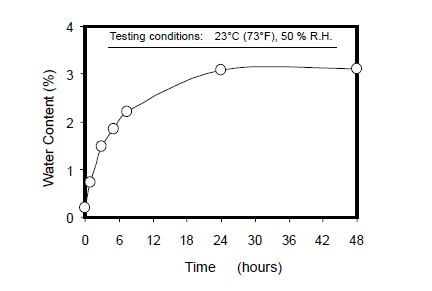
Figure 2. Hygroscopic Properties of PELECTRON AS
Precaution Against Mishandling
- In the case of using resins at molding temperatures below 200 °C (392 °F), PELECTRON AS may not fuse, possibly resulting in poor effectiveness. Furthermore, in case of using resins at molding temperatures above 300 °C (572 °F), this product may thermally decompose, possibly resulting in poor effectiveness. The recommended molding temperature is between 210 and 250 °C (410 – 482 °F).
- Depending on the kind of resin, this product may have an effect on the resin's physical properties including mechanical properties. Test the effects on each of the physical properties beforehand to ensure that there are no problems.
- Examples of Applications
PELECTRON AS has been used as a permanent antistatic agent in resins such as ABS resin and PC/ABS resin in the following applications:
- Various containers and storage cases for electric and electronic parts, etc.
- Household electrical goods (TV, air conditioners, air purification systems, etc.), office equipment, etc.
- Floor materials, base materials for tapes, etc.
Properties
- Physical Form
- Appearance
- Pale yellow pellet
- Typical Properties
Value Units Test Method / Conditions Melt Flow Rate (at 190°C 374°F, 21.18 N) approx. 30 g/10min ASTM D 1238 Melting Point approx. 195 (383) °C(°F) - Surface Resistivity approx. 4 × 10^6 Ω - Thermal Degradation Temperature approx. 285 (545) °C(°F) -
Technical Details & Test Data
- Performance Tests
The examples on pages 4 to 8 are the results of performance tests using ABS resin mixed with PELECTRON AS. This product imparts a long-lasting antistatic property to ABS resin that cannot be attained by any other conventional blend-type, low-molecular-weight antistatic agents. In addition, compared to conventional permanent antistatic agents, this product exhibits an excellent antistatic property even when used in small amounts.
1. Application to ABS Resin
A. Relationship Between Amount of PELECTRON AS and Resulting Surface Resistivity
ABS Resin containing PELECTRON AS is highly antistatic when the concentration of this product is between 5 and 15 wt %. Refer to Figure 3 and determine the optimal amount according to the desired surface resistivity.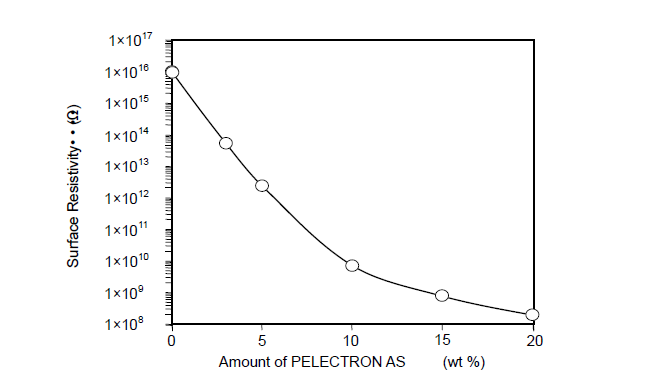
Figure 3. Relationship Between Amount of PELECTRON AS and Surface Resistivity
Materials and Methods:
Materials:
A predetermined amount of PELECTRON AS was dry-blended with ABS resin*, and the mixture was kneaded using a twin-screw extruder at 230 °C (446 °F), and then was molded using an injection molding machine [nozzle temperature: approx. 230 °C (446 °F), mold temperature: approx. 50 °C (122 °F)] into samples 2 mm (approx. 0.08 inches) in thickness.
Method:
Each sample was kept at 23 °C (73 °F), 50 % R.H. for 24 hours. Then, the surface resistivity of each was measured using a megohmmeter according to ASTM D 257.
* Melt flow rate (general, high impact ABS resin): 17 g [10 min, 220 °C (428 °F), 98.1 N]B. Effect on Surface Resistivity When Washed with Water (Evaluation of Durability of Antistatic Effect)
The surface resistivity of the ABS resin blended with PELECTRON AS minimally changes even when washed with water, remaining antistatic. This product imparts an antistatic property that cannot be attained by any other conventional blend-type, low-molecular-weight antistatic agent, which loses its antistatic property after being washed with water approximately three times.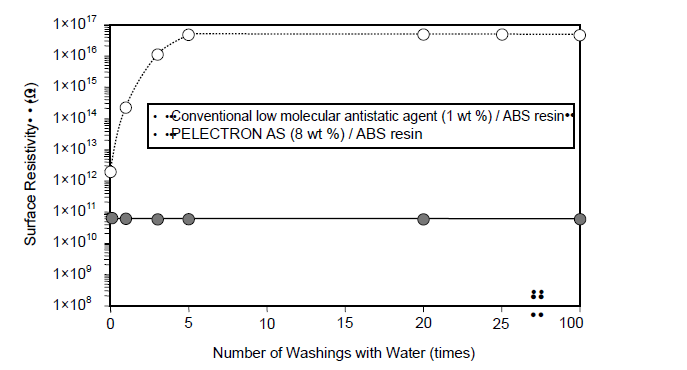
Figure 4.Effect on Surface Resistivity When Washed with Water
Materials and Methods:
Materials:
PELECTRON AS (8 wt %) / ABS resin
PELECTRON AS (8 wt %) was dry-blended with the ABS resin, and the mixture was kneaded using a twin screw extruder at 230 °C (446 °F). Then, it was molded using an injection molding machine [nozzle temperature: approx. 230 °C (446 °F); mold temperature: approx. 50 °C (122 °F)] into samples 2 mm (approx. 0.08 inches) in thickness. Conventional low-molecular-weight anionic antistatic agent (1 wt %) / ABS resin A conventional blend-type, low-molecular-weight antistatic agent, a Sanyo Chemical product, was used. It was kneaded and molded into samples by using the method described above.
Method:
Each sample was submerged in water and their surfaces were rubbed with a cotton cloth. The samples were dried under reduced pressure [133 Pa (0.02 psi)] at 70 °C (158 °F) for 2 hours. They were kept at 23 °C (73 °F), 50 % R.H. for 24 hours, and then the surface resistivity was measured using a megohmmeter according to ASTM D 257. This process was repeated according to the number of washings with water as described in Figure 4.C. Effect of Humidity on Surface Resistivity
The surface resistivity of the ABS resin blended with PELECTRON AS minimally changes even in low humidity due to this product’s low dependency on humidity. Conversely, ABS resin blended with any other conventional low-molecular-weight antistatic agent loses its antistatic property in low humidity.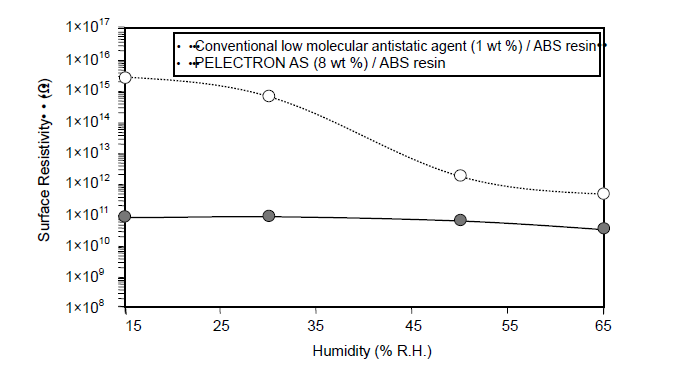
Figure 5. Effect of Humidity on Surface Resistivity
Materials and Methods:
Materials:
Samples were prepared under the same conditions described for Figure 4.
Method: Each sample was kept at 23 °C (73 °F) at a predetermined humidity for 24 hours. Then, the surface resistivity of each was measured using a megohmmeter.D. Examples of Resin Physical Properties
As shown in Table 1, PELECTRON AS minimally affects the ABS physical properties.Property Method
(ASTM No.)PELECTRON AS (10 wt %) /
ABS ResinABS Resin Surface resistivity Ω D 257 7 × 10^9 > 10^16 MPa (psi) Tensile strength D 638 44 (6,380) 34 (4,930) MPa (psi) Flexural modulus D 790 2,160 (313,280) 2,400 (348,090) Izod impact strength J/m (notched) (ft.Ibf/in) D 256 332 (6.22) 358 (6.70) Materials and Methods:
Materials:
Surface resistivity
PELECTRON AS (10 wt %) was dry-blended with the ABS resin, and the mixture was kneaded and molded under the same conditions as described for Figure 4 into samples 2 mm (approx. 0.08 inches) in thickness.
Other mechanical properties
Samples were prepared under the same conditions as described above except that the predetermined size described in ASTM was applied. ABS resin was also molded under the same conditions.
Methods:
See the ASTM No. described in Table 1.E. Dispersibility of PELECTRON AS
As shown in Figure 6, PELECTRON AS is finely dispersed in the ABS resin.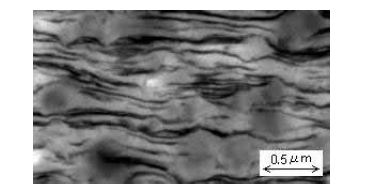
Figure 6. Transmission Electron Micrograph of Molded Resin (TEM photo) Composed of PELECTRON AS (8 wt %) and ABS resin
[Explanation of Photograph]
Black stripes: PELECTRON AS
Black particles: Butadiene component of ABS resin
Figure 6 is a magnification (approx. 30,000 times) of a section of the PELECTRON AS
(8 wt %) / ABS mixture described in Figure 4. Black stripes are PELECTRON AS. Black
particulate materials are the rubber component derived from butadiene. This product works as a conductive network.2. Application to PC/ABS Resin
A. Relationship Between Amount of PELECTRON AS and Resulting Surface Resistivity
PC/ABS resin containing PELECTRON AS is highly antistatic when the concentration of this product is between 5 and 15 wt %. Refer to Figure 7 and determine the optimal amount according to the desired surface resistivity.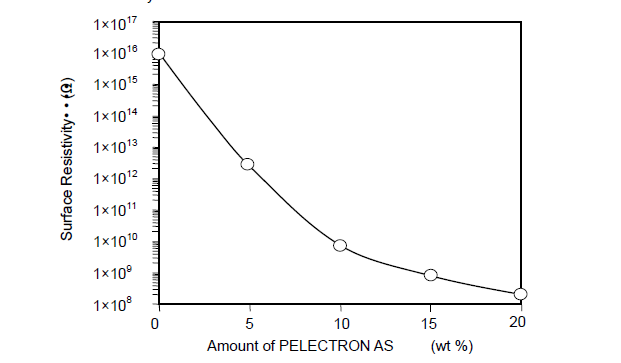 Figure 7. Relationship Between Amount of PELECTRON AS and Surface Resistivity
Figure 7. Relationship Between Amount of PELECTRON AS and Surface ResistivityMaterials and Methods:
Materials:
A predetermined amount of PELECTRON AS was dry-blended with the PC/ABS resin*, and the mixture was kneaded using a twin screw extruder at 230 °C (446 °F). Then, it was molded using an injection molding machine [nozzle temperature: approx. 230 °C (446 °F), mold temperature: approx. 50 °C (122 °F)] into samples 2 mm (approx. 0.08 inches) in thickness.
Method:
Each sample was kept at 23 °C (73 °F), 50 % R.H. for 24 hours. Then, the surface resistivity of each was measured using a megohmmeter according to ASTM D 257.
* Melt flow rate (general, PC/ABS resin): 7.2 g [10 min, 170 °C (338 °F), 21.18 N]
Safety & Health
- Hazards Description
PELECTRON AS is a polyether-polyolefin block copolymer.
Vapor or fume from molten material causes eye and nose irritation.
This product is for industrial use only.